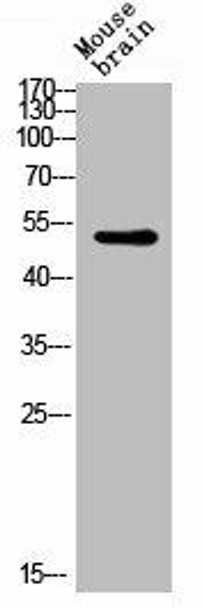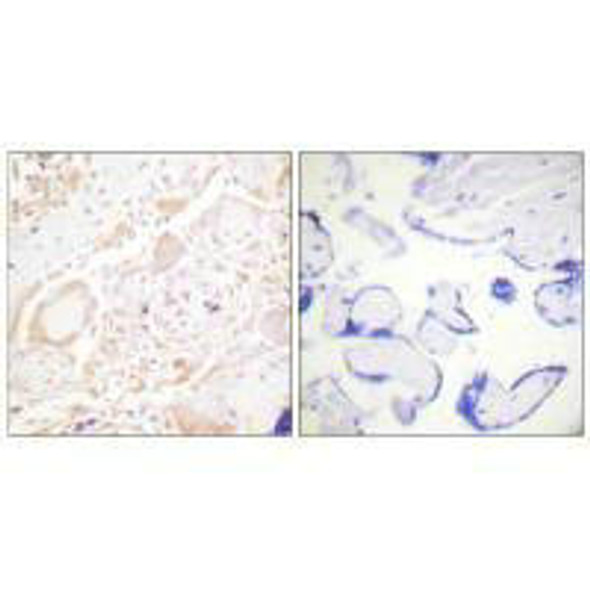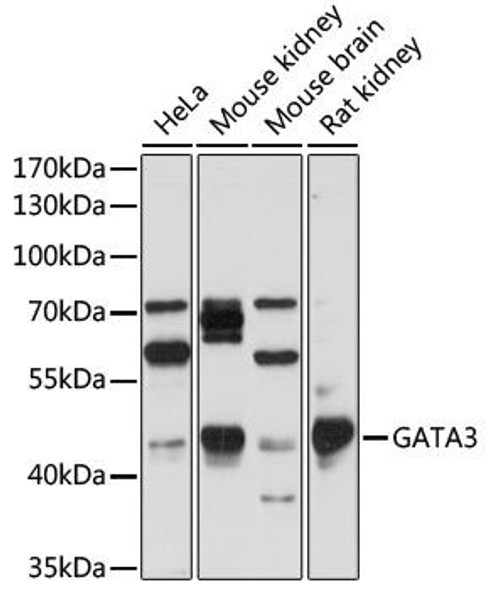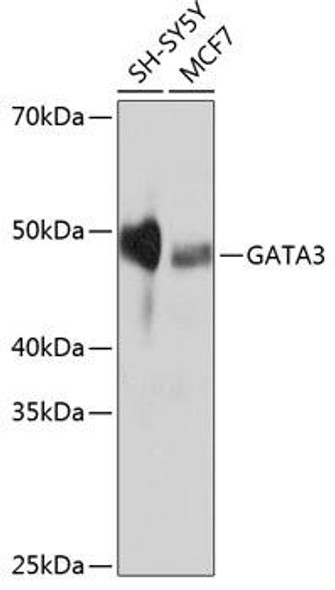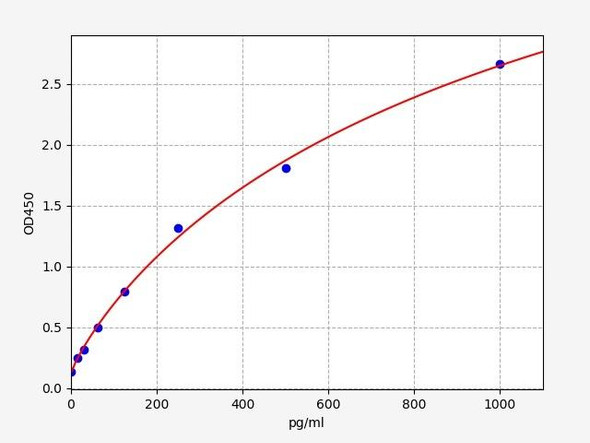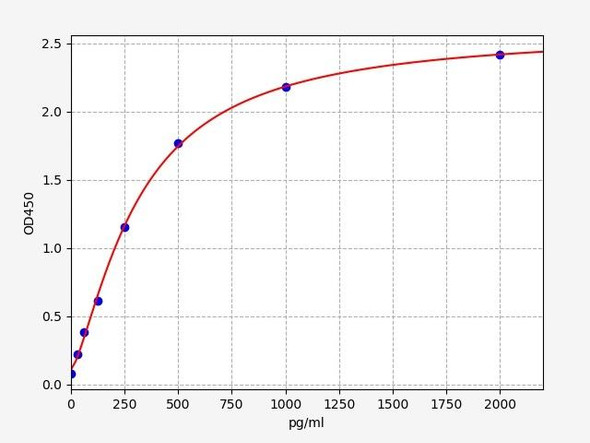GATA3/GATA2 Antibody (PACO02777)
- SKU:
- PACO02777
- Product Type:
- Antibody
- Reactivity:
- Human
- Mouse
- Host Species:
- Rabbit
- Isotype:
- IgG
- Applications:
- ELISA
- WB
- IHC
- IF
- Antibody Type:
- Polyclonal Antibody
- Conjugation:
- Unconjugated
Description
GATA3/GATA2 Antibody (PACO02777)
The GATA3/GATA2 Polyclonal Antibody (PAC002777) is specifically designed for research involving the GATA3 and GATA2 transcription factors, which play important roles in the regulation of gene expression in various cell types. This antibody, produced in rabbits, is highly reactive with human samples and has been validated for use in Western blot and immunohistochemistry applications.GATA3 and GATA2 are critical for the differentiation and function of several cell types, including T cells, hematopoietic cells, and endothelial cells. Dysregulation of these transcription factors has been implicated in various diseases, such as cancer, cardiovascular disorders, and immune system dysfunctions.
By targeting GATA3 and GATA2, researchers can gain valuable insights into the molecular mechanisms underlying these diseases and potentially identify new therapeutic targets.This polyclonal antibody binds to both GATA3 and GATA2 proteins, allowing for the detection and analysis of these transcription factors in different cellular contexts. Its high specificity and sensitivity make it an essential tool for studies in immunology, oncology, and developmental biology. Researchers can utilize this antibody to explore the role of GATA3 and GATA2 in gene regulation, cell differentiation, and disease pathogenesis, leading to advancements in the understanding and treatment of various disorders.
| Antibody Name: | GATA3/GATA2 Antibody |
| Antibody SKU: | PACO02777 |
| Size: | 50ug |
| Host Species: | Rabbit |
| Tested Applications: | ELISA, WB, IHC, IF |
| Recommended Dilutions: | IHC:1:100-1:300, IF:1:200-1:1000 |
| Species Reactivity: | Human, Mouse |
| Immunogen: | synthesized peptide derived from human GATA-3 around the non-phosphorylation site of S308. |
| Form: | Liquid |
| Storage Buffer: | Liquid in PBS containing 50% glycerol, 0.5% BSA and 0.02% sodium azide. |
| Purification Method: | The antibody was affinity-purified from rabbit antiserum by affinity-chromatography using epitope-specific immunogen. |
| Clonality: | Polyclonal |
| Isotype: | IgG |
| Conjugate: | Non-conjugated |
| Synonyms: | GATA3; Trans-acting T-cell-specific transcription factor GATA-3; GATA-binding factor 3; GATA2; Endothelial transcription factor GATA-2; GATA-binding protein 2 |
| UniProt Protein Function: | GATA3: a transcriptional regulator central in Th2 cell differentiation. Inhibits breast cancer growth and pulmonary breast cancer metastasis. Represses INK4C transcription, constrains luminal progenitor cell expansion, and suppresses luminal tumorigenesis in the mammary gland. High GATA3 and low INK4C expression predicts a favorable patient outcome in luminal A type breast tumors. IFN-lambda1 (IL-29) inhibits GATA3 expression and suppresses Th2 responses in human T cells. GATA3 haploinsufficiency leads to HDR (hypoparathyroidism, deafness, and renal dysplasia) syndrome. Two alternatively spliced human isoforms have been described. |
| UniProt Protein Details: | Protein type:Transcription factor Chromosomal Location of Human Ortholog: 10p15 Cellular Component: nucleoplasm; nuclear chromatin; nucleolus; nucleus Molecular Function:protein dimerization activity; protein binding; DNA binding; zinc ion binding; interleukin-2 receptor binding; transcription coactivator activity; transcription factor binding; transcription factor activity Biological Process: developmental growth; positive regulation of transcription, DNA-dependent; cell maturation; ear development; cell fate determination; uterus development; T cell receptor signaling pathway; post-embryonic development; negative regulation of interleukin-2 production; norepinephrine biosynthetic process; regulation of neuron apoptosis; erythrocyte differentiation; anatomical structure formation; mesonephros development; kidney development; regulation of cytokine biosynthetic process; response to drug; thymic T cell selection; anatomical structure morphogenesis; inner ear morphogenesis; positive regulation of signal transduction; embryonic hemopoiesis; response to virus; negative regulation of fat cell differentiation; parathyroid gland development; negative regulation of mammary gland epithelial cell proliferation; response to ethanol; positive regulation of T cell differentiation; response to estrogen stimulus; positive regulation of transcription from RNA polymerase II promoter; pro-T cell differentiation; negative regulation of transcription, DNA-dependent; regulation of CD4-positive, alpha beta T cell differentiation; transcription from RNA polymerase II promoter; lens development in camera-type eye; axon guidance; phosphoinositide 3-kinase cascade; TOR signaling pathway; neuron migration; defense response; negative regulation of transcription from RNA polymerase II promoter; signal transduction; negative regulation of cell cycle; positive regulation of interleukin-4 production; negative regulation of cell proliferation; sympathetic nervous system development; negative regulation of interferon-gamma production; response to gamma radiation; type IV hypersensitivity; pharyngeal system development; thymus development; in utero embryonic development; male gonad development; humoral immune response; positive regulation of protein kinase B signaling cascade; negative regulation of inflammatory response; innate immune response; regulation of histone H3-K4 methylation; T-helper 2 cell differentiation; blood coagulation Disease: Hypoparathyroidism, Sensorineural Deafness, And Renal Disease |
| NCBI Summary: | This gene encodes a protein which belongs to the GATA family of transcription factors. The protein contains two GATA-type zinc fingers and is an important regulator of T-cell development and plays an important role in endothelial cell biology. Defects in this gene are the cause of hypoparathyroidism with sensorineural deafness and renal dysplasia. [provided by RefSeq, Nov 2009] |
| UniProt Code: | P23771 |
| NCBI GenInfo Identifier: | 120962 |
| NCBI Gene ID: | 2625 |
| NCBI Accession: | P23771.1 |
| UniProt Secondary Accession: | P23771,Q5VWG7, Q5VWG8, Q96J16, |
| UniProt Related Accession: | P23771 |
| Molecular Weight: | 443 |
| NCBI Full Name: | Trans-acting T-cell-specific transcription factor GATA-3 |
| NCBI Synonym Full Names: | GATA binding protein 3 |
| NCBI Official Symbol: | GATA3 |
| NCBI Official Synonym Symbols: | HDR; HDRS |
| NCBI Protein Information: | trans-acting T-cell-specific transcription factor GATA-3; GATA-binding factor 3 |
| UniProt Protein Name: | Trans-acting T-cell-specific transcription factor GATA-3 |
| UniProt Synonym Protein Names: | GATA-binding factor 3 |
| Protein Family: | GATA-binding factor |
| UniProt Gene Name: | GATA3 |
| UniProt Entry Name: | GATA3_HUMAN |

